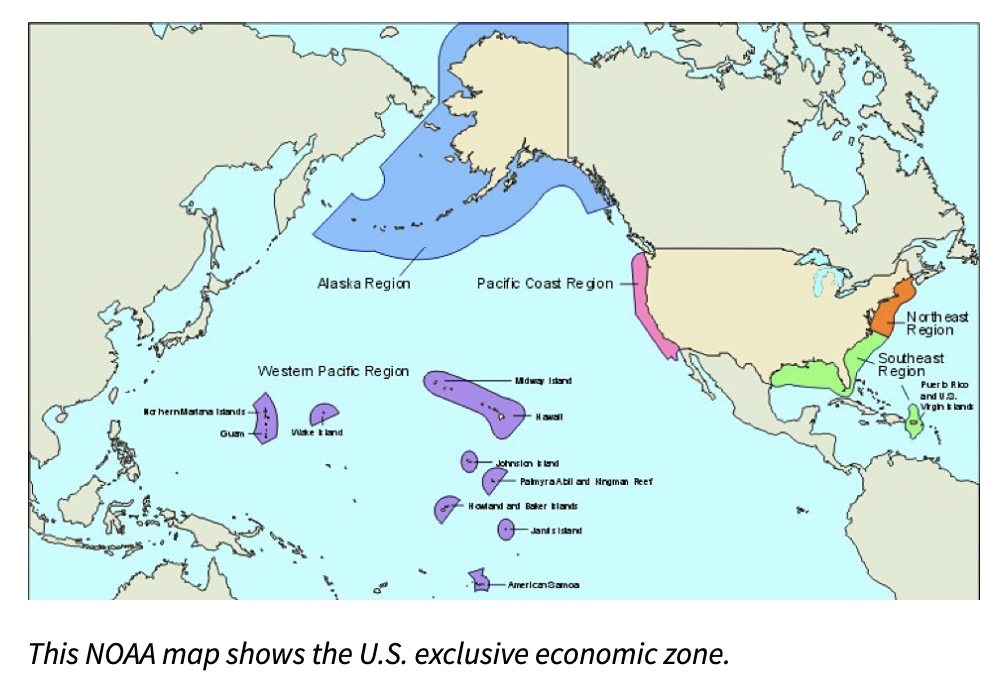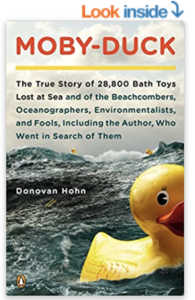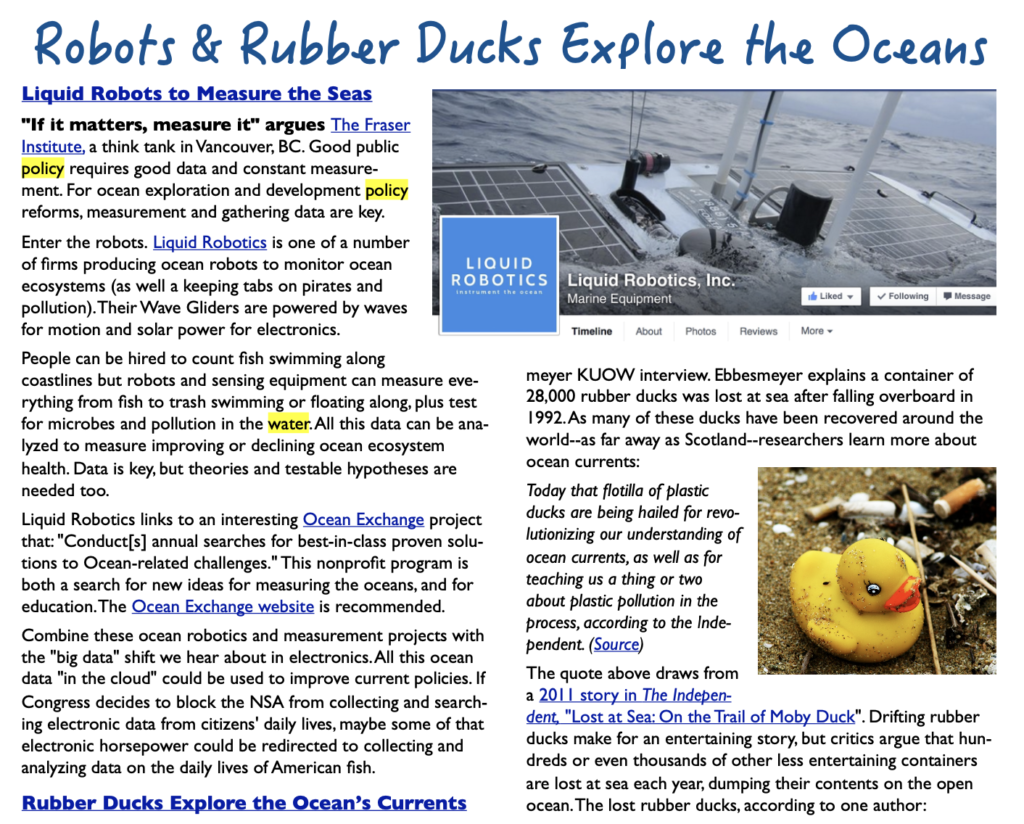Robots & Rubber Ducks Explore Offshore Waters
Liquid Robots to Measure the Seas
“If it matters, measure it” argues The Fraser Institute, a think tank in Vancouver, BC. Good public policy requires good data and constant measurement. Measuring water resources matters, both onshore above and below ground, and offshore.
Much of America’s most valuable water resources are offshore, within the 200 nautical mile U.S. Exclusive Economic Zone (EEZ). This zone of U.S. waters extends not only out from the continental US, but also offshore Alaska, Hawaii, around extensive US Protectorates. See NOAA’s What is the EEZ?

One way to gather ocean waters data is with robots. Liquid Robotics makes floating robots to monitor ocean ecosystems (as well a keeping tabs on pirates and pollution). Their Wave Gliders are powered by waves for motion and solar power for electronics.
People can count fish swimming along rivers and coastlines but robots and floating sensing equipment can measure more, everything from fish swimming to trash drifting, plus test for microbes and pollution in the water. All this data can be analyzed to measure improving or declining ocean fisheries and ecosystem health. Data is key, but theories and testable hypotheses are needed too.
Liquid Robotics links to an interesting Ocean Exchange project that: “Conduct[s] annual searches for best-in-class proven solutions to Ocean-related challenges.” This nonprofit program searches for new ideas for measuring the oceans, and provides education. Also recommended is the Ocean Exchange website.
Combining data from ocean buoys and robots, with and enhanced satellite data, mix in some new artificial intelligence algorithms and ocean intelligence “in the cloud” can help improve current policies. If Congress decides to block the NSA from collecting and searching electronic data from citizens’ daily lives, maybe some of that electronic horsepower could be redirected to collecting and analyzing data on the daily lives of American fish.
Rubber Ducks Explore the Ocean’s Currents

Who knew “tens of millions” of rubber ducks race rivers for charity. Curtis Ebbesmeyer, in a KUOW radio interview, discusses the popular charity races where people bet on (or “adopt”) a rubber duck for $5, and thousands are released to “race” (i.e. drift) downriver. Also: ‘Moby-Duck’: When 28,800 Bath Toys Are Lost At Sea (NPR, March 29, 2011)
A January race of 25,000 ducks on the Wando River was expected to raise $100,000 for charities, plus pay $10,000 for the winning duck’s owner.
Downstream, oil booms and a “Rotary Navy” of boats and kayaks on the Wando kept stray ducks from floating away uncaptured.
Apparently a significant number of ducks do float away uncaptured, passing the finish line and escaping out to sea. Because each duck is tagged for the contest, ocean researchers can learn about ocean currents as these ducks are carried away by ocean currents and breezes. Runaway rubber ducks and their value for research, is discussed in the Ebbes-meyer KUOW interview. Ebbesmeyer explains a container of 28,000 rubber ducks was lost at sea after falling overboard in 1992. As many of these ducks have been recovered around the world–as far away as Scotland–researchers learn more about ocean currents:
Today that flotilla of plastic ducks are being hailed for revolutionizing our understanding of ocean currents, as well as for teaching us a thing or two about plastic pollution in the process, according to the Independent. (Source)
Drifting rubber ducks make for an entertaining story, but critics argue that hundreds or even thousands of other less entertaining containers are lost at sea each year, dumping their contents on the open ocean. The lost rubber ducks, according to one author:
… lays bare a largely ignored threat to the marine environment: the vast numbers of containers that fall off the world’s cargo ships.
No one knows exactly how often containers are lost at sea, due to the secretive nature of the international shipping industry.
Rubber ducks don’t seem dangerous to marine life, but eventually they break apart, as do millions of other plastic products that find their way out onto the world’s oceans. A number of books have profiled the issue and some claim giant islands of plastic debris can be seen from space.
One page pdf on Robots and Rubber Ducks Explore the Oceans.

